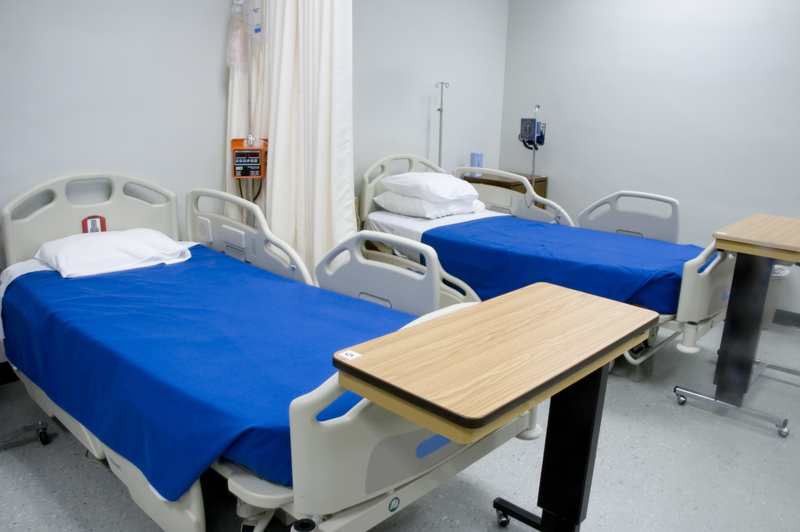You can set up your own survival sick room with first aid basics and other health essential items. You don't need a nursing degree, but understanding basic knowledge of health can be a great value during this time. Read on to find out more.
A sick room in a retreat with air conditioning won’t qualify as decent ventilation when the power’s down. In this case, air ducts are actually more a danger than a benefit. Microbes passing through the air ducts in the sick room to other areas may present a risk for transmission of disease. Cover with duct tape. Keep windows or tent flaps open, however, except in particularly bad weather. Screening may be necessary in areas with lots of insects, or netting provided over the beds.
Furnishings should be minimal, with a work surface, an exam area, and bed spaces. In mild weather, some of these beds can be outside, as long as shade is provided via a canopy or other means. Hard surfaces are preferable to fabric upholstery, as cloth can harbor disease-causing organisms. Even bedding might best be covered in plastic. The more areas that can be disinfected easily, the better.
It’s important to have a way to eliminate waste products of bedridden patients, even if it’s just a 5-gallon bucket and some bleach. Containers with lids should be made available to put used sick room items that need cleaning.
A station should be set up near the entrance of the sick room or hospital tent for caregivers’ masks, gloves, gowns, aprons, and other personal protection items (have a good supply of these items). You’ll should also have a basin with water, soap, or other disinfectant. Thermometers should be dipped in alcohol.
Many consider medical supplies to consist of gauze, tourniquets, and battle dressings, but you must also dedicate sets of sheets, towels, pillows, and other items to be used in the sick room. Keep these items separate from the bedding, bathing, and eating materials of the healthy members of your family or group.
Having a lot of these may seem like overkill to you, but there can never be enough dedicated medical supplies. Expect to care for more people that you’ve planned for. There will always be additions that weren’t planned, and medical items will be expended much faster than you’d expect.
Cleaning supplies should also be considered medical preparedness items. You’ll want to clean the sick room thoroughly on a daily basis. Hard surfaces should be regularly cleaned with soap and water, or use other disinfectants such as a 1:10 bleach solution. Don’t forget to disinfect the doorknobs, tables, sinks, toilets, counters, and even toys.
Wash bed sheets and towels frequently; boil them if you have no other way to clean them. As these items may carry disease-causing organisms, wash your hands after use. The same goes for plates, cups, etc. Any equipment brought into the sick room should stay there.
One additional item that will be important to your sick room patients: Give them a whistle or other noisemaker that will allow them to alert you when they need help. This will decrease anxiety and give them confidence that you will know when they are in distress.
During a survival situation hygiene and separating sick patients from healthy ones will be imperative in order to keep everyone alive. If you haven't tried to set up a survival sick room it may be a good idea to do a mock room sometime, just so you have some practice.
Have you ever tried to set up a survival sick room or something similar before? If so, feel free to share your personal experience with us!
Source: Doom and Bloom
